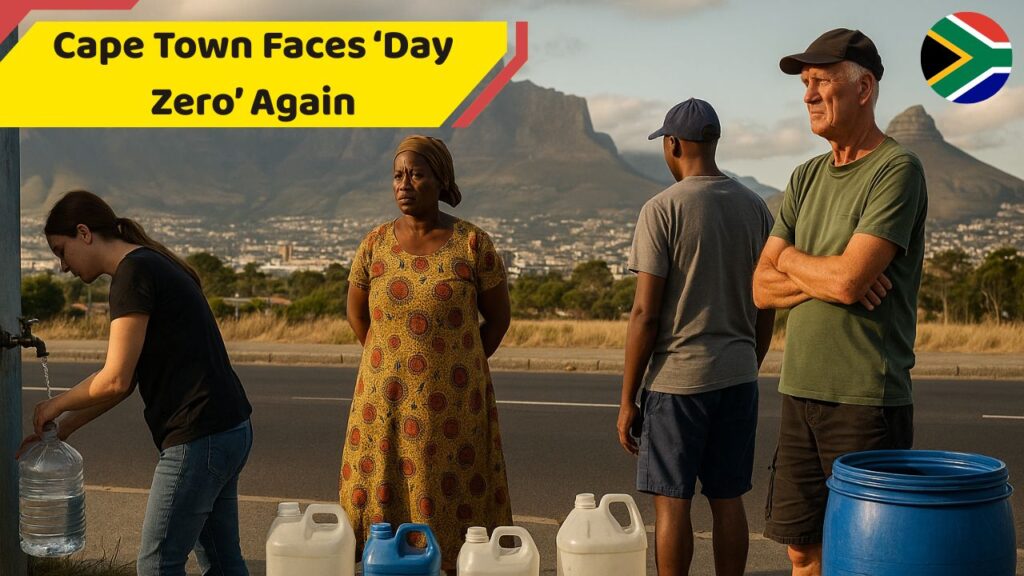As South Africa braces for another summer, Cape Town’s water crisis is once again capturing attention. With dam levels dropping to just 35%, the fear of a second “Day Zero” — when taps could run dry — looms large. Residents are urged to conserve water as the city faces mounting pressure from drought conditions and increased demand. Authorities are implementing new measures to manage the crisis, but concerns remain about long-term sustainability and equitable distribution of clean drinking water across communities.

Cape Town Water Shortage Intensifies
The current water shortage crisis in Cape Town has worsened due to a combination of low rainfall and rising consumption. With dam reserves below 40%, experts warn that the city may face strict restrictions in the coming months. Efforts like recycled wastewater usage and desalination projects are being expanded, yet supply still struggles to meet growing demand. Residents are urged to limit daily consumption to 50 liters per person, while municipal authorities monitor high-usage households to prevent waste.
Government Measures to Prevent ‘Day Zero’
In response to the falling water reserves, the South African government has launched several initiatives to avert Day Zero. These include installing smart water meters, increasing tariffs for excessive usage, and accelerating the development of new desalination plants. The Department of Water and Sanitation is also introducing awareness campaigns promoting responsible water use. Officials emphasize that only collective action can prevent the severe rationing that previously brought the city to the brink of disaster in 2018.
Community Action and Long-Term Solutions
Local communities are stepping up with creative strategies to tackle Cape Town’s ongoing water scarcity challenge. Many neighborhoods are using rainwater harvesting systems and greywater recycling to reduce dependence on municipal supply. Environmental groups are calling for sustainable farming practices and urban water conservation to safeguard future generations. The focus is shifting from crisis management to long-term resilience, ensuring that Cape Town can weather future droughts with greater preparedness and sustainability.
Summary and Outlook
As the water crisis intensifies, Cape Town stands at a critical juncture. While the risk of Day Zero remains real, government and citizens alike are demonstrating resilience and innovation. The lessons from past shortages have reshaped public attitudes toward water conservation and infrastructure planning. The next few months will be decisive in determining whether Cape Town can avoid disaster and become a model for drought-resistant urban management across Africa.
| Measure | Details |
|---|---|
| Current Water Reserve | 35% as of November 2025 |
| Daily Usage Limit | 50 liters per person |
| Smart Meter Rollout | Completed in 70% of households |
| Desalination Capacity | Expected increase by 25% in 2026 |
| Government Awareness Drive | Ongoing through community outreach programs |
Frequently Asked Questions (FAQs)
1. What is Cape Town’s current water level?
It stands at approximately 35% of total storage capacity.
2. What does Day Zero mean?
It refers to the day when municipal water supplies could completely run out.
3. How can residents help conserve water?
They can use rainwater, fix leaks, and reduce daily water usage.
4. Are desalination plants helping the crisis?
Yes, they are adding much-needed supply to Cape Town’s water system.




